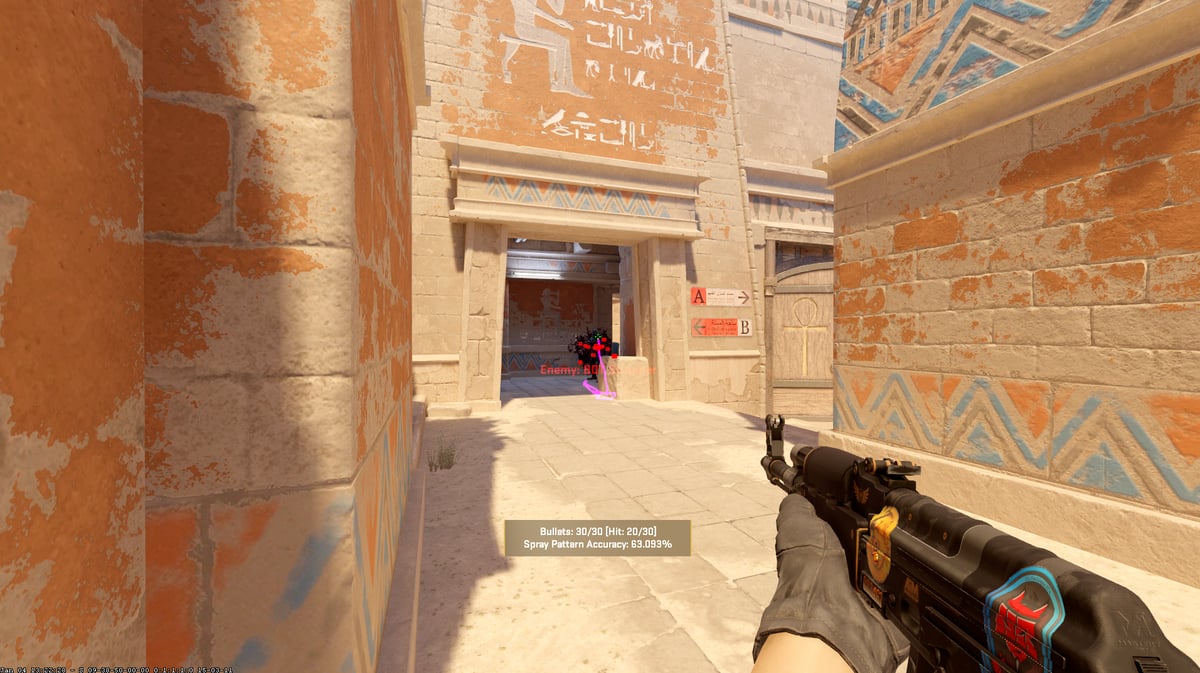BJY Trends
Stay updated with the latest trends and insights.
Tapping vs Spraying: Which CS2 Technique Makes You a Legend?
Discover the ultimate showdown between tapping and spraying in CS2. Unleash your legendary potential with expert tips and techniques!
Tapping vs Spraying: Understanding the Mechanics Behind Each Technique
When it comes to applying finishes, coatings, or liquids, the choice between tapping and spraying can significantly impact the final result. Tapping involves using a brush or a sponge to apply the product directly onto the surface, allowing for detailed control and precision. This technique is particularly effective for intricate designs or small areas where meticulous application is essential. On the other hand, spraying utilizes a spray gun or aerosol can to evenly distribute the liquid over a larger area, providing a smooth and uniform finish that is difficult to achieve with brushing methods. The mechanics behind each technique highlight their unique advantages and potential drawbacks.
In tapping, the user can manipulate the amount of product being applied, which is critical in applications where thin layers are necessary, such as when layering paints or finishes. Conversely, spraying is often favored in commercial settings due to its efficiency and speed, especially in painting large surfaces like walls or vehicles. However, spraying may require additional equipment like a compressor or a spray booth to manage overspray and ensure consistent delivery. Understanding these methods and their mechanics is crucial for achieving the desired outcome, allowing individuals to choose the right technique based on their specific needs.

Counter-Strike is a popular tactical first-person shooter that has captivated gamers worldwide. One of the key factors in mastering the game is understanding various maps and their specific strategies. For instance, players often need to familiarize themselves with mirage callouts to communicate effectively with their team during matches. The game's emphasis on teamwork and strategy makes it a thrilling experience for both casual and competitive players.
The Pros and Cons of Tapping vs Spraying in CS2: Which Should You Choose?
When it comes to choosing between tapping and spraying in CS2, it's essential to weigh the pros and cons of each technique. Tapping involves firing shots at a slower pace, allowing players to maintain better accuracy and control over their aim. This method is particularly beneficial for long-range engagements, where precision is key. Additionally, tapping allows for a clearer focus on recoil management, leading to fewer stray bullets. However, the downside is that tapping may not be ideal in close-quarter battles where quick succession fire is necessary, potentially putting players at a disadvantage.
On the other hand, spraying can yield high damage output in rapid-fire scenarios, making it a popular choice among players who prefer aggressive playstyles. The spread of bullets can lead to a higher chance of hitting moving targets, particularly in tight spaces. Nevertheless, the con is that spraying often results in increased recoil, challenging a player's ability to maintain accuracy over longer distances. Ultimately, your choice between tapping and spraying should depend on your playstyle and the situations you encounter in CS2. Consider experimenting with both techniques to find the right balance for your gameplay.
How Tapping and Spraying Can Transform Your CS2 Gameplay: Tips for Mastery
In the competitive realm of CS2, mastering the techniques of tapping and spraying can significantly elevate your gameplay. Tapping refers to the art of firing single shots with precision and control, allowing players to take down opponents at long range without wasting ammunition. To harness this technique effectively, players should practice their aim in aim training maps and utilize the game's inherent weapon mechanics. Coupling this with an understanding of bullet drop and recoil patterns is crucial for becoming a sharpshooter. Spraying, on the other hand, involves holding down the trigger to unleash a barrage of bullets, making it effective in close to mid-range encounters. Understanding how to control spray patterns is essential; mastering the rapid recoil reset and using the right crosshair placement can make all the difference in high-pressure scenarios.
To truly master these techniques, consider the following tips:
- Practice Regularly: Utilize training maps to refine your skills in both tapping and spraying.
- Adjust Your Sensitivity: Finding the right mouse sensitivity is key for consistent aim.
- Learn the Spray Patterns: Each weapon has its unique recoil pattern; understanding them will enhance your effectiveness in battle.
- Crosshair Placement: Always aim at head level and anticipate enemy movements for quick reactions.